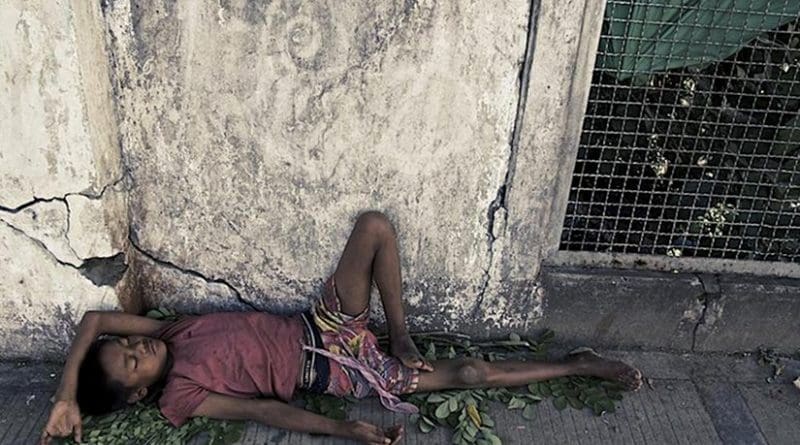Confronting Asia’s Demographic Demons – Analysis
By Robert C. Thomas
If demography is indeed destiny, the future of Asia looks troubled. A gruesome New York Times report recently threw the spotlight back onto the continuing plight of the Rohingya ethnic minority in Myanmar, a crisis that has struggled for consistent coverage amid a swath of recent global conflicts and disasters. The horrific stories of violence that the report detailed provided a more grimly intimate portrait than any broader facts or figures could on their own.
Unfortunately, this most recent flashpoint is just one manifestation of an even broader problem. Struggles to successfully manage cultural and ethnic diversity continue to plague East and Southeast Asia more broadly. Should additional shocks from warfare or climate change spark other (and perhaps larger) population flows in the region, it may exacerbate a range of existing economic, political, and security challenges.
Myanmar itself is an example of how bad things can get when intergroup tensions come to a boil. Since late August, members of Myanmar’s long-persecuted Rohingya minority have faced an explosion of violent repression that began as an aggressive crackdown in response to militant attacks on the police (which were, in turn, ostensibly motivated by past police repression). Myanmar’s vaunted political icon, Aung San Suu Kyi, has seen her global reputation harmed over her apparent unwillingness to take a stand in support of the Rohingya. The roots of the crisis are complicated by the fact that Myanmar’s government insists that the Rohingya are not actually citizens but instead illegal immigrants from Bangladesh, whose government also denies their citizenship. Even so, hundreds of thousands of the Rohingya have fled to squalid refugee camps in Bangladesh, where local poverty and government red tape have cut them off from adequate support. Ironically, the latest violence against them seems to seriously have bolstered Rohingya support for the very militant group whose attacks sparked the retaliation.
The fires in Myanmar are burning hot, but the region’s struggle with diversity has a cold side as well. In the face of refugee crises in Myanmar and in the Middle East, no less a regional leader than Japan has been widely criticized for taking in a mere three refugees in the first half of this year. This might seem out of place for a nation that prioritizes international aid as a policy tool in its post-war pacifist constitution. In fact, Japan’s wariness of integrating newcomers remains a prominent feature of the country’s political climate. This is true despite the fact that Japan faces a worsening demographic crisis with an aging and shrinking labor force. This preference for maintaining homogeneity over diversity has held strong even when pitted against the demands of both humanitarianism and self-interest.
Meanwhile, the region’s giant faces a very different kind of struggle with diversity. Fearful of domestic separatism and unrest, Chinese leaders have taken an aggressive approach to dealing with the ethnically and culturally distinct populations of regions such as Tibet and Xinjiang. The Tibetans and the Uyghurs of Xinjiang have seen their communities transformed by ethnic Han Chinese migrants, tourists, and development projects directed from Beijing, while Chinese leaders increasingly repress Tibetan and Uyghur cultural and religious practices. Rather than working to encourage these populations to see themselves as equal stakeholders in the project of the Chinese state, policymakers seem intent on controlling and repressing them as tightly as possible.
This regional pattern of discomfort with demographic diversity may be at least partly due to the lingering challenges of adapting to originally foreign political norms. Like their counterparts in the Middle East, the people and institutions of East and Southeast Asia have spent the last few generations adapting to borders, laws, and political models that were partly injected into their region from the outside. The scars of colonialism and the legal and political ideals of Europe have both left their mark, but evaluating the impact of the past must not stop policymakers from also assessing the challenges of the present and future.
By continuing their current course, Chinese leaders risk further harming, inflaming, and radicalizing entire swaths of their own population at home while further damaging their credibility and soft power abroad. Japanese voters and policymakers continue to resist taking a clear look at how to manage one of the only plausible paths away from the demographic cliff that they are currently hurtling towards. The military officials and politicians of Myanmar are watching as outside faith in their domestic reforms and democratic transition is swiftly replaced by horror and revulsion at mounting crimes against humanity, while their own ethnic and political divisions begin congealing into a recipe for long-term insurgencies.
Left unaddressed, this pattern of inability or unwillingness to deal with demographic diversity and movement is likely to remain one of the greatest threats to peace, prosperity, and stability in the region. There is plenty of debate to be had over how much this is driven by deeper concerns over national identity or by the tensions surrounding more mundane political challenges, but governments in the region continue to struggle with the integration and political representation of demographic minorities. Whatever the relative sources of the problem, these demographic issues will likely continue to bedevil states in East and Southeast Asia just as seriously as those in Europe today.
As is the case more often than cynics care to admit, the demands of morality and the demands of strategy are pulling in the same direction. Both regional policymakers and others with a stake in Asia’s future should focus on building better ways to integrate diverse communities of minorities and immigrants into the region’s economic and political institutions. If they fail to do so, the catastrophe facing the Rohingya of Myanmar may be only the tip of the iceberg for a dark future in the region.
The opinions, beliefs, and viewpoints expressed by the authors are theirs alone and don’t reflect any official position of Geopoliticalmonitor.com.

